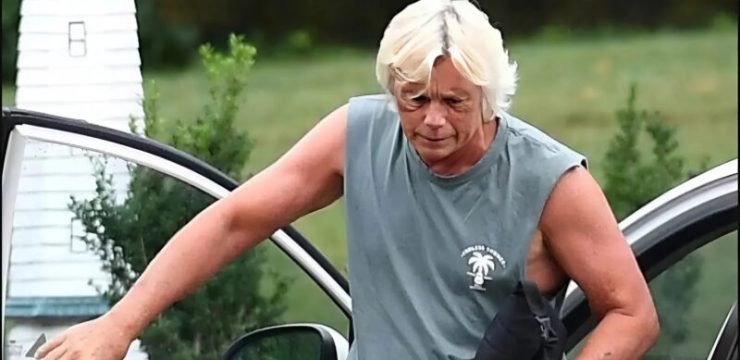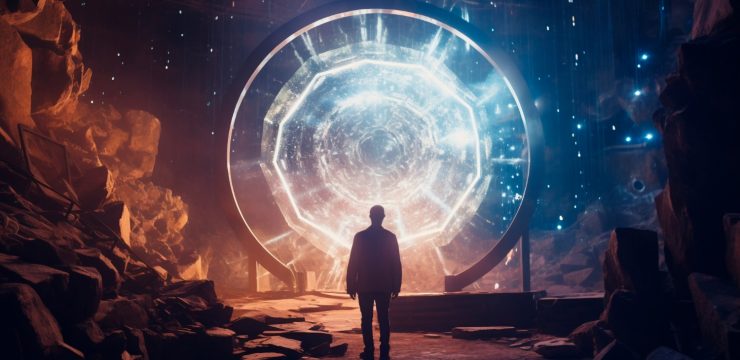On a cool June morning in 2028, three campers hiking near Cow Rock Mountain stumbled upon a moldy backpack half-buried in a ravine along the Tennessee–North Carolina border. Inside were a cracked camera lens, a broken compass, and a faded photo ID that reignited one of the Appalachian Trail’s most chilling mysteries. The name on the card was unmistakable: Noah Whitaker, the 17-year-old who had vanished without a trace five years earlier.
For years, Noah’s story echoed through trail shelters and campfires. Weathered posters with his smiling face clung to ranger stations and warning signs, while rescue teams and drones scoured the forests to no avail. His disappearance was baffling—no distress signal, no signs of struggle, just a boy who walked into the woods and never came out.

The Final Hike
Noah was no ordinary hiker. Growing up in Asheville, North Carolina, he knew the Appalachian terrain like the back of his hand. His weekends were spent trekking through dense forests, photographing wildlife, and studying maps. His dream was to one day hike the entire Appalachian Trail, but before graduation, he planned a short solo trip through Blood Mountain Wilderness.
He set out on a bright morning in March 2023, his gear neatly packed and camera in hand. That afternoon, he sent his mother, Elise, a photo from a rocky ridge blanketed in fog, captioned: “Edge of the world.” It would be the last message she ever received.
When Noah failed to check in by Friday, Elise didn’t worry right away—cell service in the mountains was unreliable. But by Saturday, unease set in. She called the sheriff, and by Sunday, search teams were combing the trails. They found his tent off the main path, oddly positioned, with supplies neatly arranged inside. One hiking boot was missing. In his journal, the last entry read: “Heard movement near camp last night. Probably deer. Didn’t sleep much.”
An Unsolved Search
The initial search revealed no answers. There were no footprints, no torn gear, nothing to suggest panic or foul play. Search dogs picked up a faint trail that abruptly vanished. Investigators expanded the radius, but the forest seemed to swallow every clue. Then, a mile away, a scrap of paper was found weighed down with stones. It read, “I think I saw something last night.” Several pages were missing from Noah’s journal.
As days stretched into weeks, hope faded. Elise addressed reporters, her voice trembling: “My son wasn’t careless. He knew these woods. Something happened to him.” The search was scaled back, and eventually, Noah became another unsolved name on the long list of disappearances along the Appalachian Trail.
Legends of Blood Mountain
Locals have always spoken cautiously about Blood Mountain. Long before the hiking trails, Cherokee tribes called it a place of unrest. Campers told tales of blue lights flickering through the fog, humming sounds in the night, and whispers that seemed to echo their own names. Many chalked it up to wind or exhaustion—until Noah disappeared.
Online forums lit up with speculation. Some believed he was lured deeper into the forest by someone posing as a fellow hiker. Others claimed he’d encountered “The Hermit of Slaughter Creek,” a rumored recluse living off-grid. A grainy photo surfaced of a boy beside a campfire, but it was too blurry to confirm his identity.
Then came an anonymous post, seven months later: “I saw the kid from the news. He’s not lost. He just won’t leave.” It mentioned details that hadn’t been made public—a missing boot, a camera, a boy watching something unseen. Investigators traced it to an unregistered account, but the user vanished as quickly as they appeared.
The Discovery
For five years, the forest kept its secret. Then, in June 2028, campers stumbled upon Noah’s belongings at the base of Devil’s Thumb—a rocky, unmarked outcrop avoided even by locals. Alongside the pack, authorities found skeletal remains later confirmed to be Noah’s. His journal, tucked into a hollow tree nearby, was still legible despite the decay. The final entries were disturbing:
“Something circles my camp. It doesn’t walk—it waits.”
“The moon feels wrong. Shadows move when the wind stops.”
“I dream I’m underground. I’m not dead. I hear them digging.”
The last page was smeared with blood.
The Final Photos
Noah’s camera held 163 images, most of them landscapes and trail scenes. But the final five photos sent shivers through investigators. One showed a blur in the distance. The next, a tall, thin shape partially hidden behind trees. Another, closer—too close. The fourth image was taken from the ground, as if the camera had fallen. The last was almost entirely black, but enhanced analysis revealed two glowing eyes staring directly into the lens.
The final image—file name “I am gone 162”—showed Noah’s terrified face, his hand pointing behind him toward the darkness. Forensic experts identified a shadowy figure towering over seven feet tall with elongated limbs and an unnatural posture. It wasn’t an animal. It wasn’t a trick of light. Whatever it was, it had been real—and it had been watching him.
Patterns in the Woods
Symbols carved into nearby trees added another layer to the mystery: circles intersected by triangles, matching markings found in 19th-century journals from a hermit who once lived in the same region. The carvings, he wrote, were meant to ward off “the watchers.” Similar symbols appeared in drone footage from other unsolved cases of missing hikers within fifty miles of Pine Hollow.
A Mother’s Farewell
In July 2028, Elise returned to the spot where her son was found. She placed a letter in the hollow tree that once hid his journal and scattered his ashes beneath it. “You’re home now,” she whispered.
Weeks later, a hiker posted a video showing a freshly carved symbol near the same ravine. The comments exploded with fear, and one anonymous reply simply read: “It’s moving again.”
The Mystery Lives On
The case of Noah Whitaker remains one of the Appalachian Trail’s darkest legends—a reminder that even in our mapped and measured world, some places refuse to give up their secrets. The trail is beautiful, yes, but it is also ancient, alive, and sometimes hungry. Noah walked into the wilderness chasing peace and wonder. What he found instead was something waiting in the shadows—something that still hasn’t let go.





